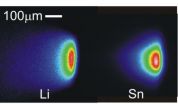(Press-News.org) Jeremy Keenan and colleagues report that during a cluster-randomized clinical trial in Ethiopia, nasopharyngeal pneumococcal resistance to macrolides was significantly higher in communities randomized to receive azithromycin compared with untreated control communities.
Funding: The National Institutes of Health (NEI U10 EY016214) was the main supporter of this trial. This project was also supported by the Bernard Osher Foundation, That Man May See, the Harper Inglis Trust, the Bodri Foundation, the South Asia Research Fund, Research to Prevent Blindness, NIH/NCRR/OD UCSF-CTSI KL2 RR024130, and NIH/NEI K23EY019071. The International Trachoma Initiative generously donated the azithromycin used for this study. The funders of the trial had no role in study design, data collection and analysis, decision to publish, or the preparation of the manuscript.
Competing Interests: James H Jorgensen was an Advisory board member for BD Diagnostics and has received research support from BD Diagnostics, bioMerieux, Merck and Pfizer.
Citation: Skalet AH, Cevallos V, Ayele B, Gebre T, Zhou Z, et al. (2010) Antibiotic Selection Pressure and Macrolide Resistance in Nasopharyngeal Streptococcus pneumoniae: A Cluster-Randomized Clinical Trial. PLoS Med 7(12): e1000377. doi:10.1371/journal.pmed.1000377
IN YOUR COVERAGE PLEASE USE THIS URL TO PROVIDE ACCESS TO THE FREELY AVAILABLE PAPER:
http://www.plosmedicine.org/article/info%3Adoi%2F10.1371%2Fjournal.pmed.1000377
PRESS-ONLY PREVIEW OF THE ARTICLE: www.plos.org/press/plme-07-12-keenan.pdf
CONTACT:Jeremy Keenan
University of California San Francisco
Francis.I. Proctor Foundation for Research in Ophthamology
513 Parnassus Ave, Med Sci S309
San Francisco
CA 94143-0412
United States of America
+1 415 476 1442
+1 415 476 0527 (fax)
Jeremy.Keenan@ucsf.edu
Nuclear Receptor Expression Defines a Set of Prognostic Biomarkers for Lung Cancer
David Mangelsdorf and colleagues show that nuclear receptor expression is strongly associated with clinical outcomes of lung cancer patients, and this expression profile is a potential prognostic signature for lung cancer patient survival time, particularly for individuals with early stage disease.
Funding: This work was funded by the Howard Hughes Medical Institute (DJM), Cancer Prevention and Research Institute of Texas grant RP101251 (JDM and DJM); National Institutes of Health grants U19 DK62434 (DJM), P50 CA70907 (IIW, JDM, DJM), UL1 RR024982 (GX and YX), and CA152301 (YX); a Robert A. Welch Foundation grant I-1275 (DJM); the Gillson Longenbaugh Foundation (JDM); DOD VITAL and PROSPECT (IIW, JDM); and a National Center for Research Resources grant for the North and Central Texas Clinical and Translational Science Initiative (UL1RR024982 to YJ). The funders had no role in study design, data collection and analysis, decision to publish, or preparation of the manuscript.
Competing Interests: The authors have declared that no competing interests exist.
Citation: Jeong Y, Xie Y, Xiao G, Behrens C, Girard L, et al. (2010) Nuclear Receptor Expression Defines a Set of Prognostic Biomarkers for Lung Cancer. PLoS Med 7(12): e1000378. doi:10.1371/journal.pmed.1000378
IN YOUR COVERAGE PLEASE USE THIS URL TO PROVIDE ACCESS TO THE FREELY AVAILABLE PAPER:
http://www.plosmedicine.org/article/info%3Adoi%2F10.1371%2Fjournal.pmed.1000378
PRESS-ONLY PREVIEW OF THE ARTICLE: www.plos.org/press/plme-07-12-manglesdorf.pdf
CONTACT: David Manglesdorf
University. of Texas Southwestern Medical Center
Department of Pharmacology,
Dallas, TX 75390-9050
United States of America
+1 214 645-5967
+1 214 645-5969 (fax)
davo.mango@utsouthwestern.edu
INFORMATION: END
Washington, DC — Monkeys moved thought-controlled computer cursors more quickly and accurately when provided with additional sensory feedback, according to a new study in the Dec. 15 issue of The Journal of Neuroscience. While most brain-machine technologies rely only on visual feedback, this study demonstrated that these systems can be improved when users have additional input, such as a sense of the arm's position and motion, a sensation known as proprioception.
With the aid of brain-controlled devices, paralyzed people have been able to send e-mail, ...
Inside a small cabinet the size of a dorm refrigerator in one of Himadri B. Pakrasi's labs, a blue-green soup percolates in thick glass bottles under the cool light of red, blue and green LEDS.
This isn't just any soup, however. It is a soup of champions.
The soup is colored by a strain of blue-green bacteria that bubble off roughly 10 times the hydrogen gas produced by their nearest competitors—in part because of their unique genetic endowment but also in part because of tricks the scientists have played on their metabolism.
Hydrogen gas can be produced by microbes ...
DALLAS – Dec. 14, 2010 – Researchers at UT Southwestern Medical Center have discovered sets of genes active in cancer cells and normal tissue that predict survival time and potential new treatments for patients with non-small cell lung cancer.
"Patient responses to cancer treatment vary widely and often depend on subtle biological differences among tumors," said Dr. David Mangelsdorf, chairman of pharmacology at UT Southwestern and co-lead author of the study, published Dec. 14 by PLoS Medicine.
"These findings are important because the ability to determine which genes ...
If you want to look attractive and healthy, the best thing you can do is get a good night's sleep, finds research in the Christmas issue published on bmj.com today.
For the first time, say the authors, there is scientific backing for the concept of beauty sleep.
The study, led by John Axelsson from the Karolinska Institutet in Sweden, investigated the relationship between sleep and perceptions of attractiveness and health. The authors believe this research is important in today's 24 hour society with the number of people suffering from sleep disorders and disturbed ...
People can be reassured that while alcohol may slow down digestion after a rich calorific meal, enjoyed by many during the Christmas season, it will not cause indigestion symptoms such as heartburn, belching and bloating, finds research in the Christmas issue published on bmj.com today.
In order to determine the effects of alcohol on the digestive system when rich meals are consumed, investigators at the University Hospital of Zurich, led by Dr Mark Fox now at the Queens Medical Centre in Nottingham, studied 20 individuals who either drank wine or black tea with cheese ...
Research in the Christmas issue published on bmj.com today explodes the Danish myth that it is possible to get drunk by submerging your feet in alcohol.
The authors, led by Dr Peter Lommer Kristensen from the Hillerød Hospital in Denmark, say it was important that the myth underwent scientific scrutiny to prevent students wasting their time experimenting with this activity.
Three adult volunteers took part in the study. None of them suffered from any chronic skin or liver disease and they were not addicted to alcohol or psychoactive drugs. The participants were not ...
The skeletons of kings and queens lying in mass graves in the Royal Basilica of Saint-Denis in Paris could finally have the solemn funeral ceremonies they deserve, say experts in the Christmas issue published on bmj.com today.
Many of the graves in the Royal Basilica were destroyed by revolutionaries in 1793 and very few remains of the mummified bodies have been preserved and identified.
Dr Philippe Charlier led the scientific breakthrough that has identified the head of the French King, Henri IV.
A team of scientists from different fields of expertise including ...
Washington, D.C. (December 14, 2010) -- One of the rarest metals on Earth may be an excellent option for enabling future flash memory chips to continue to increase in speed and density, according to a group of researchers in Taiwan.
"Incorporating nanocrystals of iridium into the critical floating gate portion of flash memory designs shows both excellent memory properties as well as stability in the high temperatures used in processing such semiconductor devices," says the research team leader, Wen-Shou Tseng of Taiwan's Center for Measurement Standards, Industrial Technology ...
Washington, D.C. (December 14, 2010) -- The manufacturing of semiconductor wafers used in all types of electronics involves etching small features onto a wafer with lasers, a process that is ultimately limited by the wavelength of the light itself. The semiconductor industry is rapidly approaching this fundamental limit for increasing the speed of the microchip. The development of a new intense 13.5-nm (extreme ultraviolet or EUV) light source will resolve this issue by reducing the feature size by an order of magnitude or so, according to Purdue researchers in the Journal ...
Washington, D.C. (December 14, 2010) -- Moving a step closer toward quantum computing, a research team in the Netherlands recently fabricated a photodetector based on a single nanowire, in which the active element is a single quantum dot with a volume of a mere 7,000 cubic nanometers. The device is described in the American Institute of Physics' journal Applied Physics Letters.
Photodetectors based on single quantum dots are expected to find uses in optoelectrical interfaces in future quantum computers, where single photons will carry information over long distances and ...



